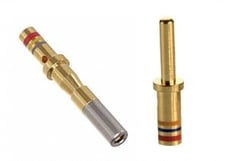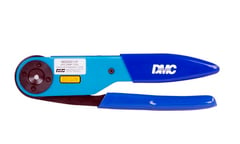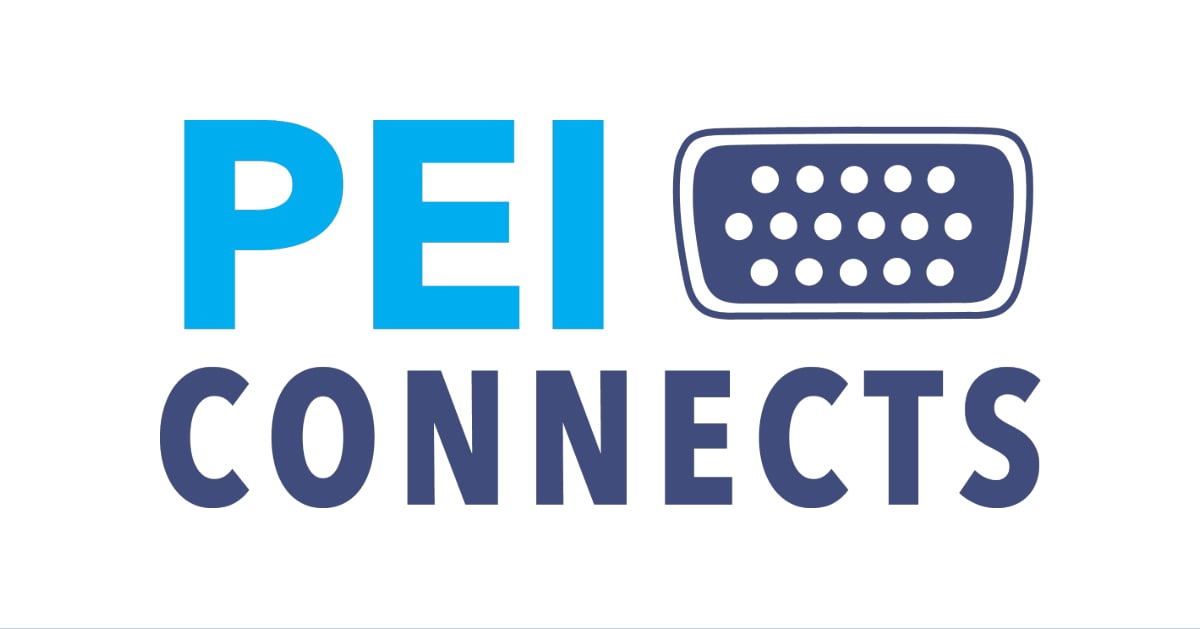Just as selecting the right electrical connector is a crucial step in designing a reliable system, so is choosing the correct contacts to use with that connector. The right choice of contacts, however, might not always be clear because electrical contacts come in a variety of sizes, contact types, layouts, platings, and termination types — all of which are related to specific application requirements.
What are Electrical Connector Contacts?
Electrical connector contacts are the pins or sockets that form the electrically conductive portion of a connector. When two connectors are correctly mated, electricity can flow through the contacts. Because we depend on the contacts for reliably transmitting signals and power, making an informed decision when choosing them cannot be overemphasized.
The starting point for selecting connector contacts is the electrical specifications for the application. The application’s defined electrical voltage and current requirements will help determine not only what connectors are available to choose from, but which contacts are most appropriate for use. The contacts are a critical part of having a connector that can perform within the rated voltage and current specifications.
Additionally, it is essential to verify that the connector can handle the power requirements related to the connectors, especially in connection to heat generation. Consider this: as electrical current goes through the connector, heat is generated in the contacts, and the more contacts there are, the more heat will be generated. The connector itself must be able to handle the heat generated in the contacts.
Contact Layout and Sizes
Many applications require a specific connector layout or number of wires. Part of meeting the electrical requirements of an application involves verifying that the correct number of contacts based on that layout and number of wires are being used. Each connector layout is designed for specific contact sizes, so selecting a connector layout compatible with your needs will narrow down which contact sizes you have to choose from (and simplifies the selection process).
Contact Type
The three main contact type categories include: stamped, formed, and machined. Stamped and formed contacts are often grouped because they are similar. They are well suited to high volume production because of how easy they are to manufacture (i.e., feeding strips of thin metal into an automated crimping machine).
Machined contacts are preferred for low volume orders because they require more effort to fabricate. However, they may be necessary for power applications that require heavy-duty usage.
Contact Plating
Another key consideration when selecting contacts for an electrical connector is the plating: contact plating affects both the conductivity and the durability of the connection. Gold plating offers excellent conductivity, and its high lubricity means it can withstand high mating cycles. Its primary disadvantage is high cost, so it may be most beneficial to use for smaller contacts. Tin, on the other hand, is usually used for bigger contacts since more material is required for its larger surface area and therefore, greater associated cost. It also performs exceptionally well for low-vibration or static conditions.
Contact Termination Type
The termination type is also crucial when selecting the contact type for an application because it has a significant impact on both the assembly equipment and the processes used in manufacturing connectors. The two most common options are crimp contacts and solder contacts. 
A crimp contact is terminated to a wire by crimping with an appropriate die and tool. After termination, an insertion tool is typically used to insert the crimped contact into the connector. The contact can be removed using a specialized removal tool unless it is a removable crimp contact, in which case it will either be front or rear release without the need for a unique tool. Because crimp contacts can be removed, they are often easier to repair in the field.
Solder contacts, unlike crimp contacts, cannot be removed by the user because they are bonded into the insulator. In this case, the contact is terminated to the wire with solder. While this termination type may not be as simple to repair, it is easier to seal against the ingress of moisture.
PEI-Genesis: Your Contact Expert
Trying to find the right combination of layout, size, type, plating, and termination type for your contacts can be tricky. While some connectors include contacts by default, others may require that the contacts be ordered separately. At PEI-Genesis, our team of experts can help you find the right contacts for your system, even if it involves engineering custom connector solutions.











